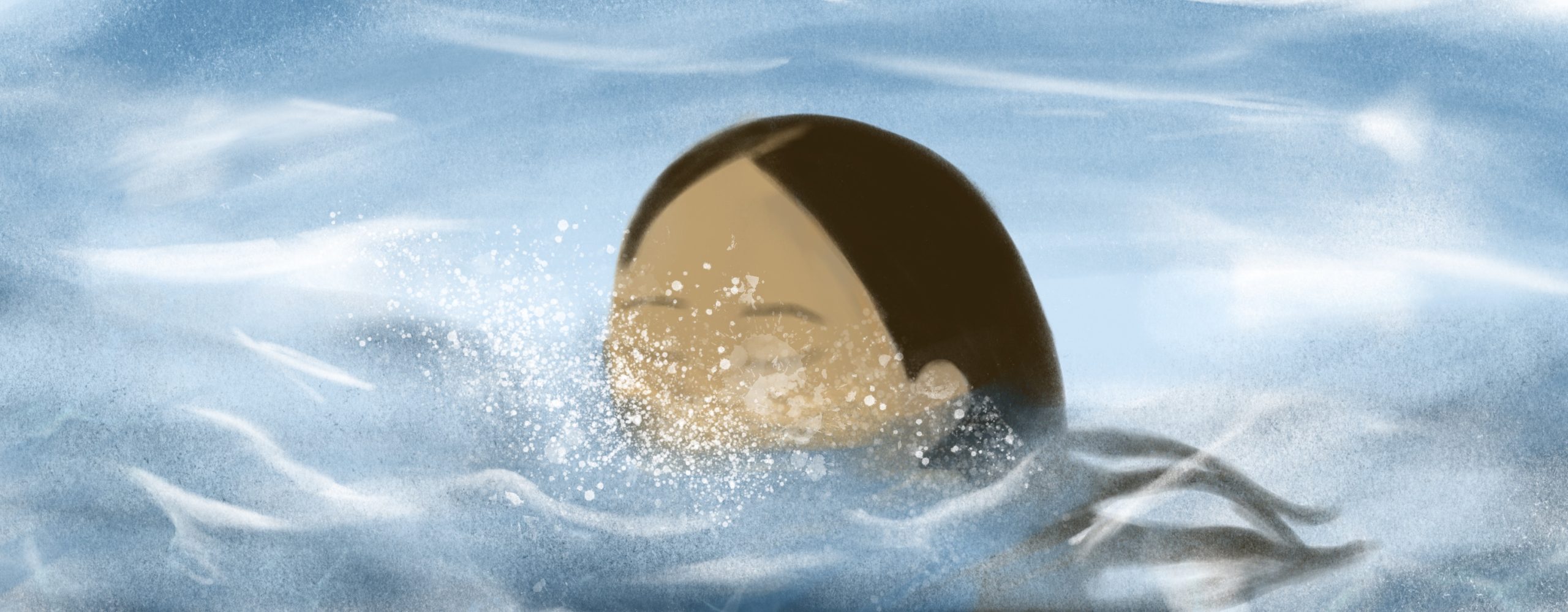Imagine plunging into ice-cold water, feeling an intense chill that spikes your heart rate and leaves your skin tingling.
This is the essence of a “cold plunge,” a practice that’s recently gained popularity in wellness circles for its numerous claimed benefits. But what makes these icy immersions so beneficial and are they genuinely worth the chill?
When exposed to cold, the body strives to maintain its core temperature—which activates a “cold shock response,” triggering shivering and increasing metabolism as the body tries to produce warmth.
According to recent findings, this reaction can stimulate brown adipose tissue (BAT), commonly known as brown fat—which burns calories to generate heat.
“Body temperature can lower during and after cold water immersion,” explained Emma L. Reed, Graduate Researcher in Human Physiology at the University of Oregon. “We begin to shiver, which increases metabolism, with heat as the byproduct. It would take a lot of shivering (even too much) to have a significant effect on fat loss. However, there is the potential for cold plunges to stimulate brown adipose tissue—which has metabolic benefits.”
By activating BAT, cold exposure may aid in regulating body weight and even enhance insulin sensitivity, according to research published in the Journal of Clinical Investigation. For those with fitness goals or metabolic concerns, activating brown fat could be a compelling reason to try cold plunges.
Cold plunges encourage the blood to flow more efficiently throughout the body, especially to major organs. This increased circulation may, over time, contribute to cardiovascular health.
During a plunge, blood moves away from the skin and muscles toward the core to preserve heat, temporarily raising the heart rate. This short-term rise could stimulate beneficial adaptations in heart health with regular exposure.
“During and after a cold plunge, blood flow is redirected from your peripheral tissues (skin, muscle) to your core,” Reed said. “It could be that these short, repeated increases in heart rate may lead to beneficial heart adaptations, but more research is needed.”
While the effects may take time, students could see improvement with consistent practice, especially with shorter, more frequent exposures.
Cold plunges are widely embraced in athletic circles for muscle recovery. Post-exercise, inflammation and swelling in the muscles can cause soreness. Immersing in cold water constricts blood vessels, reducing swelling and aiding faster recovery. While it won’t replace rest, cold exposure can be a helpful adjunct for athletes or students with an active lifestyle.
For a balanced approach, Reed recommended a gradual introduction to cold exposure.
“A water temperature between 50-60°F (10-15°C) and between 30 seconds to one minute is a place to start,” she said. “The colder the water, the less time you should spend in it. You can also start with cold showers.”
Her advice is grounded in safety, emphasizing the importance of starting small and gradually increasing exposure time to avoid shock or adverse reactions.
The mental toughness required to enter cold water can be surprisingly beneficial. Many users report a mood boost and sense of accomplishment afterward, and there’s scientific reasoning behind this, according to a research article by Dr. Michael Ruscio. Cold exposure causes the release of norepinephrine—a hormone associated with increased alertness, mood enhancement and decreased inflammation. The hormone boost could be especially helpful for students facing stress.
Interestingly, Reed observed that the psychological benefit may not be unique to cold plunges.
“Some people might feel better after a cold plunge or a run or a yoga class,” she said. “It depends. It ultimately comes down to what works for your routine and what you enjoy.”
While cold plunging can enhance mental resilience, students should choose the method that best fits their preferences and lifestyle for lasting mental health benefits.
The idea of cold plunges strengthening the immune system is intriguing. Stress—in controlled amounts—is thought to stimulate the immune system, and cold exposure provides a controlled stressor that may trigger immune resilience. While the science is still evolving, studies suggest that cold plunging may lead to fewer illnesses by promoting increased production of white blood cells.
“The immune system responds to stress and cold water is a stressor to our bodies,” Reed explained. “By stressing the system, our bodies adapt to make us more ‘resilient’ to future stressors.”
While this response won’t replace good hygiene or vaccines, it may complement other health strategies to build a more robust immune system.
Interestingly, cold exposure could help improve sleep. The drop in body temperature following a cold plunge signals the body to prepare for rest—which is similar to the natural temperature drop that occurs at night. This effect could be especially beneficial for students struggling with sleep issues, as it helps encourage relaxation before bedtime.
For all its benefits, cold plunging isn’t without risks.
“Cold water can be unsafe if used incorrectly,” Reed said. “The cold shock response includes increases in heart rate, blood pressure and hyperventilation (fast breathing), so I would not recommend it for individuals with any heart or respiratory condition.”
If you’re new to cold plunging or have specific health concerns, always consult a physician before attempting.
Starting a cold plunge habit doesn’t require extreme measures. Reed suggests a simple way to start.
“At the end of your normal shower, turn the water to the coldest setting and try for at least 15 seconds,” she said. “Then increase in increments of 15 seconds.”
This gradual exposure helps condition the body without causing a significant shock, making it more sustainable for beginners.
Cold plunging is a practice rooted in science that can offer a range of benefits—from boosting metabolism and supporting heart health to enhancing mental resilience and immune function. For us students, it can be a valuable tool to manage stress, improve focus and support physical health in a demanding academic environment. With gradual practice and a mindful approach to safety, the potential benefits of cold plunges may prove well worth the chill.






